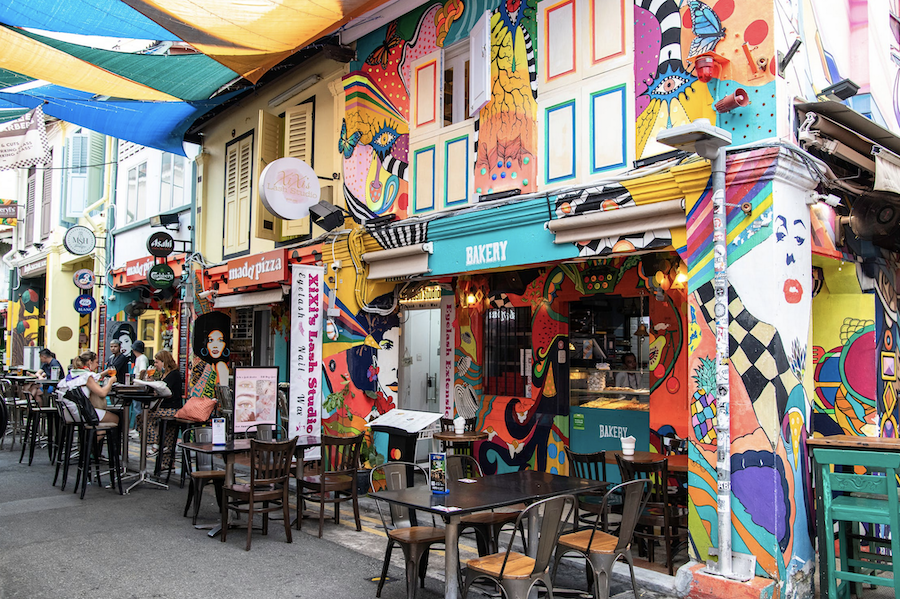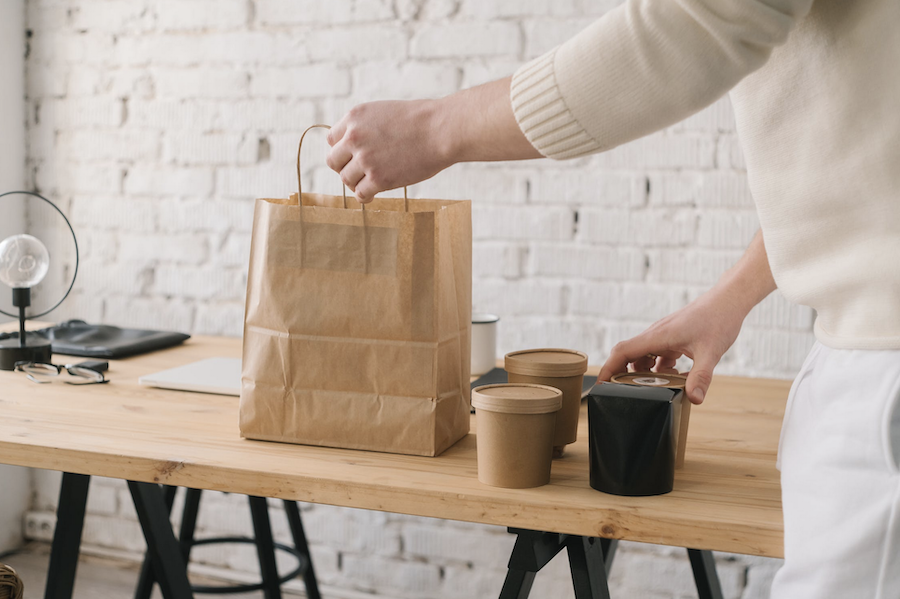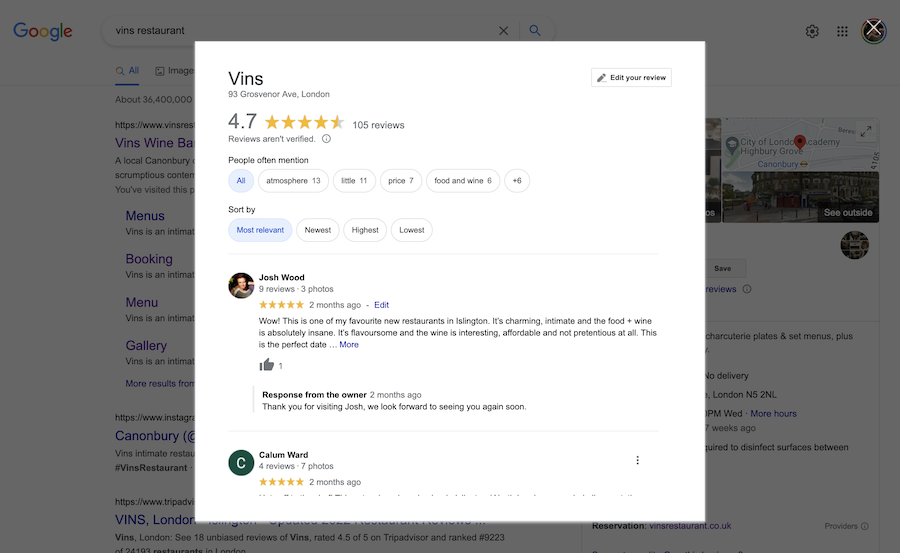Restaurant Sector – Restaurant Marketing Trends in 2024
The restaurant sector is certainly going through turbulent times in 2024.
Who knows what restaurant marketing will look like in the back-end of 2024, but we can make some educated guesses.
We have done a roundup of marketing professionals and hospitality leaders who have shared their thoughts on what the biggest trends for 2024 are when it comes to marketing.
Keep your eyes peeled for these changes, and update your marketing strategy accordingly!
Restaurant sector marketing trends 2024:
1. Engaging social media presence
2. Digitization
3. Utilizing organic SEO
4. Link building helps in the increase of online orders
5. Reputation marketing and loyalty programs
6. Text message marketing software
7. Embrace automation at every step
8. Delivery and takeout
9. Focus on customer satisfaction
10. Focus on reviews
11. Personalization
12. Over reliance on delivery apps
13. Use short form video
1. Engaging social media presence – a trend to practice
While traditional marketing remains important, restaurant owners must embrace digital marketing to keep up with the ever-changing consumer landscape.
Digitalization has changed the game completely, and restaurants must be present where the customers are.
Using the right digital marketing strategy can help restaurant owners build a memorable brand.
Engaging Social Media Presence – A Trend to Practice
Social media is the most affordable and effective way to promote a restaurant, and it’s free to get started.
The most popular social media platforms for restaurants are Facebook, Pinterest, Twitter, and Instagram.
It’s easy to join these social media platforms and get started on a small budget.
And with their free tools, you can create powerful ads and reach a large audience without breaking the bank.
The best part about using social media for restaurants? It’s cheap and easy to start.
Social media marketing is the most effective tool for restaurants today, but the future is even brighter.
According to the latest research, ninety per cent of restaurateurs say it’s essential for their business.
In fact, two out of three consumers make their decision on where to dine based on social media.
Email marketing is not deemed social but should be included in your marketing strategy.
Restaurants can use the latest technology to reach their target audiences, including push notifications.
Mr. Jitesh Keswani, CEO, E Intelligence
2. Digitization
Digitization.
In this day and age, all marketing is digital marketing.
Digital marketing for the restaurant sector will help reach customers who might have never heard of you and develop your good reputation.
It connects businesses with ideal customers when they are on Google through SEO. SEO is the essence of digital marketing and is our expertise.
SEO stands for search engine optimization.
This is a set of actions you can do to get to a higher ranking in Google and other search engines.
There are two types of SEO: on-site SEO and off-site SEO.
Everything concerning your website including the keywords you optimize your content for and it’s quality which contributes to the on-site metrics are on-site SEO.
Everything concerning the rest of the Internet that is not your website or SNS is off-site SEO. The main players here are backlinks – links on other sites referring to your pages.
And when your online visibility is fully set up you have to speed up the ordering process.
This is where automation comes in.
This is another one of the most prominent restaurant marketing trends for 2024.
This will eliminate lots of manual actions reducing the amount of work your employees have to do.
You have to craft a system that will work best for your business.
Adjust and automate online ordering, indulge in SEO to help foodies find out about you, and let your customers know you care about personalizing your services.
Marcus Clarke, Founder, Searchant.co
3. Utilizing organic SEO
I think the restaurant sector will continue the trend of using an organic SEO strategy to grow visibility and traffic to their business.
Whether it’s through fleshing out Google My Business listings or optimizing their websites, any restaurant can benefit from gaining more visibility on search engine result pages.
Over half of restaurant-goers check out businesses online before visiting–most using search engines to do so.
When most consumers are using search engines to find restaurants, businesses must adapt SEO strategies to stay in line with their competition, or else their revenue and traffic will suffer.
Kevin Miller, digital marketing expert, former Google employee, entrepreneur, and angel investor.
4. Link building helps in the increase of online orders
Link building helps in the increase of online orders.
Since the outbreak of COVID-19 in 2020, the hospitality industry has faced a huge hit and their business started down trending.
Many of the restaurants had closed their business doors.
As safety was a major concern, people stopped visiting the restaurants and chose to order online.
We worked for one of the restaurants where they were running out of funds for managing the PPC and social ads.
So they are very much concerned with increasing the online orders through organic traffic from their website.
Linkdoctor helped the restaurant to increase organic sales through link building:
1. We evaluated the organic traffic and organic value of the client.
2. Our link-building strategy led to an increase in organic traffic to the website.
3. The backlinks were diversified by getting them from high authority sites in the logistics and technology niches, etc.
As a result, the restaurant had gained a 270% increase in organic traffic and a 480% increase in online orders.
Daniel Martin, Co-founder, LinkDoctor LLC
5. Reputation marketing and loyalty programs
Reputation marketing and loyalty programs are the top marketing trends as we are heading into 2024.
Customers want to go to restaurants that they know they’ll be taken care of, that they know will provide good service, and that they know will offer deals.
Customers also go to places where they feel welcome, as well as restaurants that make them feel special.
This is where reputation marketing and loyalty programs come in.
Reputation marketing helps gain and attract customers to the restaurant, but loyalty programs are what keep the customers coming back.
Hand-in-hand, these marketing tips will increase sales and traffic if done the right way.
Brittany Mendez, Former Bartender & CMO of Florida Panhandle
6. Text message marketing software
We are seeing an increasing trend in text message marketing for restaurants as it is one of the best marketing channels used to date, therefore I think it will have the biggest impact for restaurants in 2024.
With a 98% open rate and 90% opened within 5 minutes, it’s an ideal channel for restaurants to use to market to customers with the right message at the right time and know that their subscribers will receive and read the message in a timely manner.
We know this to be the case because we have many restaurants that use our service from mom-and-pop restaurants to franchise chains like Tropical Smoothie owners and they all see tremendous results when using our software.
Some have even said they have to slow down their text marketing because on days they do send out blasts it can bring in crowds too large for them to handle!
You can see a little more about restaurants and text marketing on our site here.
Conor Lawrence, CEO, Text2VIP
7. Embrace automation at every step
Embracing automation at every step.
Automation in restaurants has increased exponentially in the past year or so, not only because of advances in technology but also because of the pandemic.
There have been less hands-on approaches to dining at a restaurant which means more AI and technologies that allow for the consumer to be less worried about things such as hygiene.
Automation means less for customers and staff to touch which is a marketing tool, as restaurants are marketing their cleanliness to consumers.
Through things such as QR code menus and ordering online, customers are able to enjoy a restaurant without even having to leave their homes.
This type of marketing strategy will increase largely in 2024, as it gives customers more options to enjoy a restaurant and it means less interaction. People love convenience which is what automation brings.
Sean Chaudhary, CEO, Alchemy Leads
8. Delivery and takeout
The COVID-19 pandemic forced many restaurants to explore curbside delivery, online ordering, and other new options for customers to dine without dining inside.
Now, with customers used to these services and continuing to take advantage of these opportunities, these dining trends seem to be here to stay.
The restaurant sector is leaning into this with their marketing messaging.
The focus is transitioning away from ways to improve the customer experience inside the restaurant and toward ways to draw in a better external experience with delivery and takeout.
Shannon Briggs, Founder & Head Trailblazer, Campfire Collective
9. Focus on customer satisfaction
Lately, it is more about the customer than the business.
When the customer is happy, the revenue increases.
One of the best marketing ideas involves looking closely into your customer care and adjusting if necessary.
If a customer is satisfied, there is an excellent possibility that they will get feedback online or via word of mouth.
Whichever it may be, it is free marketing for your brand.
And we all know that referral is an effective way of marketing too.
It is like hitting two birds with one stone.
Zachary Colman, CEO of Creatitive
10. Focus on reviews
In this post-pandemic time, most people change their lifestyles from being workaholic employees to an individual who have a work-life balance.
Most individuals or families visit a restaurant with an exciting ambiance and intriguing food menu as their outlet for working the entire week.
In my experience, online reviews influence guest decisions in choosing one restaurant over another.
Positive online reviews attract new customers and gain more loyal guests.
It is essential to manage your online review profiles and respond to customer reviews and be open to suggestions and feedback, whether positive or negative.
Dr. Prav Solanki, CEO, Prav
11. Personalization
Try personalizing your restaurant sector services while automating the delivery, for example.
It seems that this is only possible for customers who have visited or received a delivery from your restaurant in the past.
However, we have done this with people who are visiting restaurant websites for the first time.
Consider the chatbot.
Whenever a customer clicks on the chat button, we present them with help topics relevant to the pages they just browsed, starting with the current page such as menus, deliveries and other inquiries.
With this, fewer people leave a chat prematurely.
Jon Torres, Digital Marketer
12. Over reliance on delivery apps
The biggest trend I currently see is solving a growing problem of depencies on delivery apps like UberEats, DoorDash, GrubHub, and co.
Restaurants have to compete in the app as well as pay a high percentage fee for every order.
The problem is not that customers don’t want to order directly with the restaurant but rather they don’t have an easy way to do so.
Implementing an order system on the website gives back the control to the restaurant owners.
It saves not just the high fees of the apps, but also gives back marketing control to the restaurant.
By collecting phone numbers, email addresses, and delivery addresses, the marketing strategy can scale as well.
Text message campaigns about specials, loyalty programs, or specific campaigns in a neighborhood that receives a lot of orders can be executed.
Sascha Hoffmann, Lifecycle Marketing Consultant, Back 2 Marketing School
13. Use short form video
The biggest trend for the restaurant sector in 2024 is short form video.
This is for a few reasons.
First, both major platforms, Tik Tok and Instagram, actively support the use of short form video: it is their most viral and consumed style of content and their algorithms continue to promote it.
Second, trendy videos such as large scale food, elegant plating, stir fry flames, stretchy cheese etc. have the capability to go viral through organic sharing, encouraging customers to visit and see what all the fuss is about.
Third, food content is a highly sort after niche on social media, with not only businesses but specific foodie pages consistently sharing content: this enables restaurants to get exposure outside of their audience to interested, local customers.
Laundon, Director, LP Visuals
















